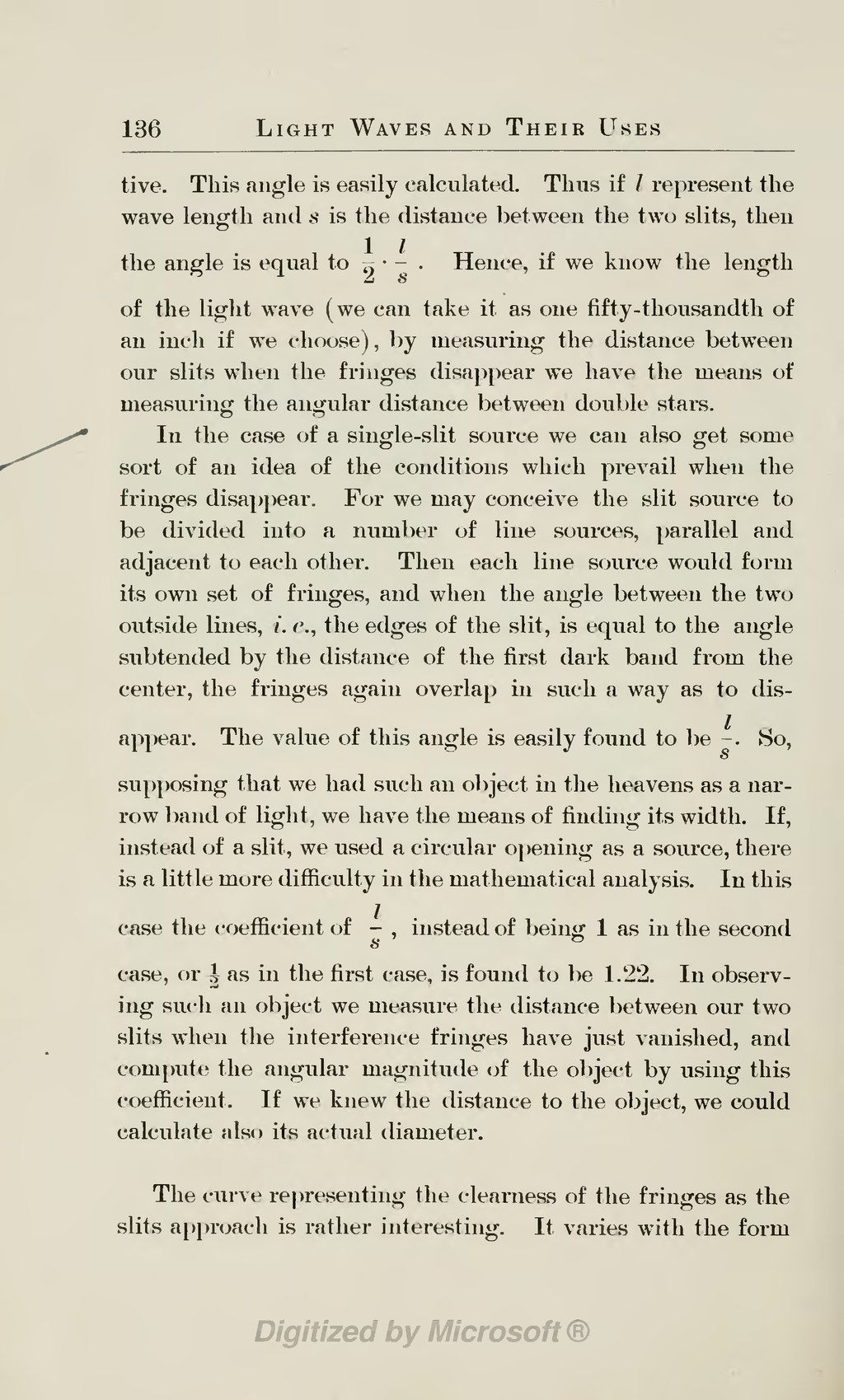tive. This angle is easily calculated. Thus if l represent the wave length and s is the distance between the two slits, then the angle is equal to 12·ls. Hence, if we know the length of the light wave (we can take it as one fifty-thousandth of an inch if we choose), by measuring the distance between our slits when the fringes disappear we have the means of measuring the angular distance between double stars.
In the case of a single-slit source we can also get some sort of an idea of the conditions which prevail when the fringes disappear. For we may conceive the slit source to be divided into a number of line sources, parallel and adjacent to each other. Then each line source would form its own set of fringes, and when the angle between the two outside lines, i. e., the edges of the slit, is equal to the angle subtended by the distance of the first dark band from the center, the fringes again overlap in such a way as to disappear. The value of this angle is easily found to be ls. So, supposing that we had such an object in the heavens as a narrow band of light, we have the means of finding its width. If, instead of a slit, we used a circular opening as a source, there is a little more difficulty in the mathematical analysis. In this case the coefficient of ls, instead of being 1 as in the second case, or as in the first case, is found to be 1.22. In observing such an object we measure the distance between our two slits when the interference fringes have just vanished, and compute the angular magnitude of the object by using this coefficient. If we knew the distance to the object, we could calculate also its actual diameter.
The curve representing the clearness of the fringes as the slits approach is rather interesting. It varies with the form

